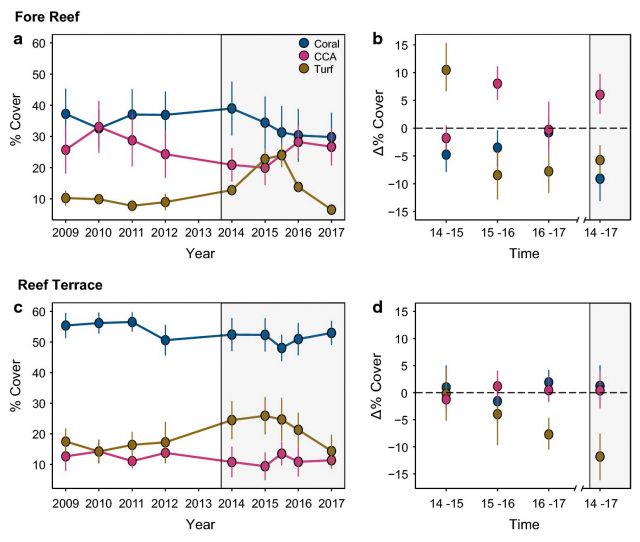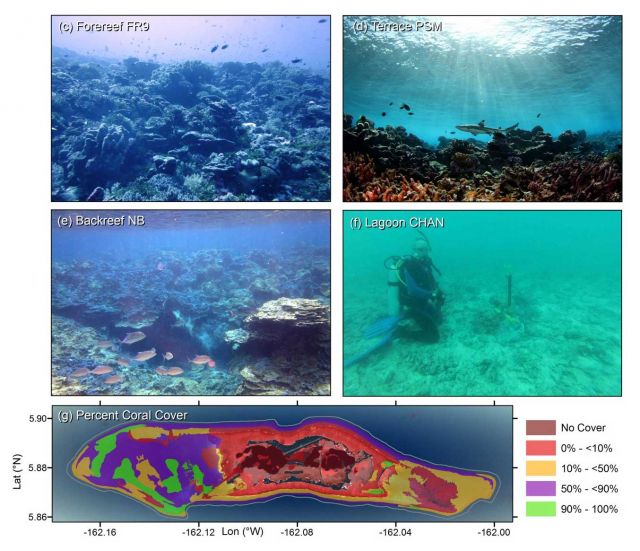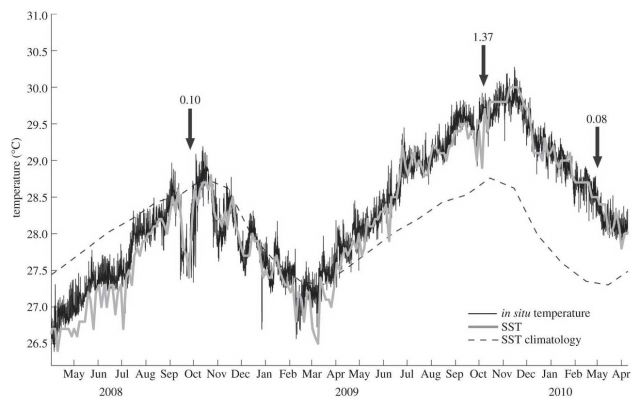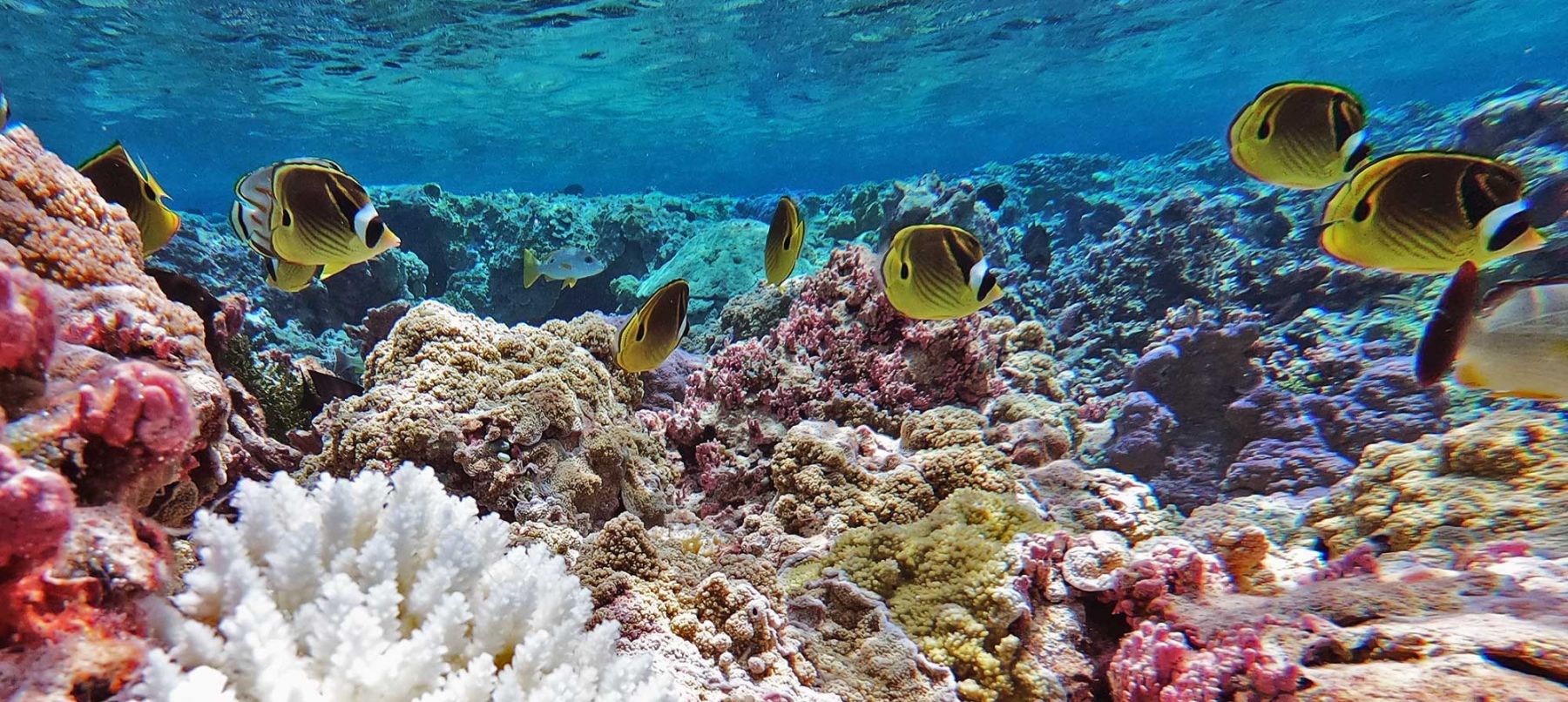Understanding the resilience of Palmyra atoll’s unimpacted marine ecosystems in the face of climate change is a major area of research. Our research seeks to develop a greater understanding of the impact of changing ocean temperatures and chemistry on Palmyra’s coral reef ecology and assess the short- and long-term effects for other island systems. Learning from places like Palmyra, which has low levels of local stressors but still faces large-scale climate stressors, will allow us to inform management, conservation and restoration in other places.
Research Highlights

Limited coral mortality following acute thermal stress and widespread bleaching on Palmyra Atoll, central Pacific
Despite a strong El Niño heating event in 2015-2016 that bleached a huge proportion of Palmyra's corals, researchers showed that the reefs at Palmyra showed remarkable resiliency and did not suffer high levels of coral mortality like many other Pacific reefs. Where coral mortality was observed, dead coral was rapidly colonized by crustose coralline algae, many species of which have been shown to facilitate coral recruitment. Within a short time frame (~2 years), coral cover had returned to pre-bleaching levels. The resilience of the coral community on Palmyra provides lessons for researchers studying drivers of coral reef resilience across Pacific reefs in response to past and future thermal stress.

Thermodynamics and hydrodynamics in an atoll reef system and their influence on coral cover
Stanford oceanographers created comprehensive thermodynamic and hydrodynamic models of Palmyra's waters using arrays of sensors deployed in the field. Coupling these models with ecological data on coral cover collected by the National Oceanic and Atmospheric Association, they modeled drivers of coral cover across the different habitats at Palmyra. They found that sites with moderate to high coral cover were generally associated with lower temperatures than sites with low or no coral cover. They also found negative correlations between coral cover and wave stress. Because increased temperatures and storm intensities are two of the major predicted outcomes of climate change, these results help to shape predictions for how Palmyra's reefs will change in the future, and can be applied to other reefs globally which experience similar conditions to Palmyra.

Ocean warming and acidification have complex interactive effects on the dynamics of a marine fungal disease
Research at Palmyra has shown that warming and acidification can have contrasting effects on diseases in important calcifying species of algae. While warming has a negative effect on the algae by increasing the rate of spread of disease, acidification has mixed affects by slowing the spread of the disease while simultaneously weakening its algal hosts. These results have important implications for how important coral reef species will respond to the multiple effects of climate change.
